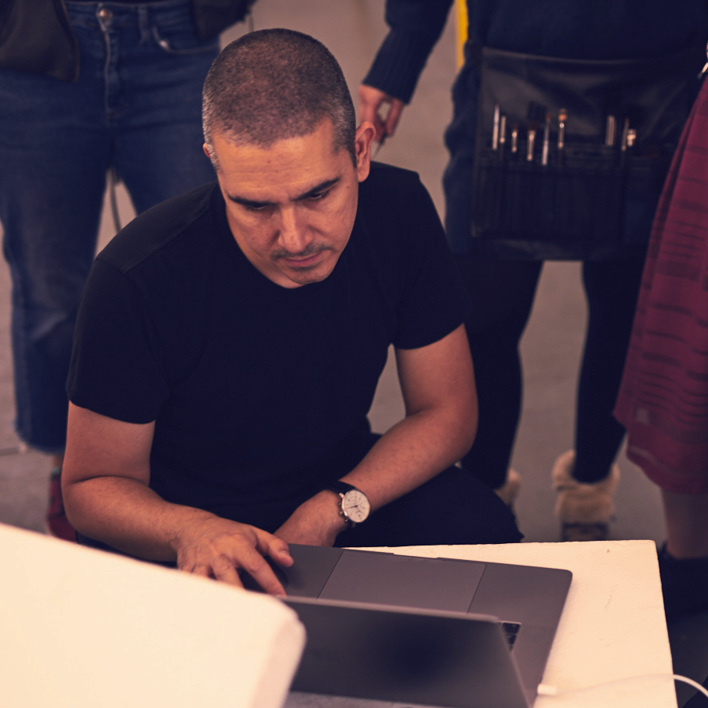Before becoming a fashion photographer, I worked for a fashion brand for many years and I can tell you, without the shadow of a doubt, that one of the worst nightmares for retailers is the reverse logistics (a.k.a. the returns). The return of an item shopped online unleashes an inverse journey that accounts for a loss of an average of £2.2 billion for businesses, according to figures from early 2018. Will online shops ever be able to reach the point of no return?
The sales process does not end when the product reaches the hands of the consumer, it ends when the consumer is satisfied with what they have bought or have been gifted. For Black Friday last year, I wrote a post where I spoke about how selling more doesn’t equate to making more profit. And this fact is even clearer when you are dealing with returns. It used to be that the average returns rate for offline shops was 8.9%, but in today’s e-commerce environment the rate has gone up to 30%.
Just picture that, 30% of what a brand sells online will be returned to them and, sadly, if a brand wants to stay competitive in today’s market they will probably have to cover all the returns expenses: shipping, quality checking, sorting, re-stocking, re-selling, etc. As unfair as this may sound, offering free returns are a necessary evil. If brands want to stay relevant and possibly sell more they have to accept the fact that returns are part of their cost of doing business.
Minimizing this returns rate is one of the biggest challenges for retailers nowadays. Many have already started investing resources in tackling one of the main reasons for customers returns, which is sizing. You may ask yourself, why is it that in 2019 we still haven’t found a way to have global standard fitting metrics? Well, mainly because there is no such thing as a standard type of body with standard proportions. But, there are many other reasons which include fabric types, pattern designs, etc which affect the way that the clothes fit. Two identical size medium t-shirts with exactly the same measurements but made out of different types of fabric have a different fit.
The whole sizing problem deserves a new blog post on its own (stay tuned). But basically, back in the day, you would go to a brick and mortar shop, you would try on the product and then you would decide whether to buy it or not. These days, most of our shopping is done online and it is common practice to buy several sizes of an item and return the ones that don’t fit. This comes with an immense cost for the retailer.
Sizing is not the only reason for returns, other reasons include defective items, fraud (wear and return) or simply how easy and inexpensive it is to return an item. But, no matter the reason for the return, the whole reverse logistics process comes with big consequences:
Cost of reverse logistics: like I mentioned before, returns are really expensive. The item that is returned needs to be shipped back, checked for defects, sent to the warehouse from where it came from (most brands outsource the returns process and the items are shipped to a different warehouse when they are returned) and re-stocked so that it can be available for sale again.
Missed season: when dealing with seasonal products, the whole returns process can take too long for the item to be re-sold under the same season. This affects particularly fashion brands that would end up sending the item to outlets or reselling them on the secondary market (TJ-Maxx, or ‘TK-Maxx’ in the UK, specializes in buying this type of stock).
Customer loyalty: as I said before, returns are a necessary evil. Not offering a simple and free returns policy may discourage customers from buying from a brand again.
The environment: this is a consequence that should concern both the brand and the consumer, because shipping an item twice, back and forth, has double the carbon footprint. Also, some retailers like Amazon don’t provide return labels and the customer has to print them at home or find a place to print them, which has an impact on the environment of its own.
Finding a solution to reduce the number of returns will require involving both brands and consumers. On the one hand, brands need to make greater efforts in providing more accurate ways for consumers to see how a product fits. On the other hand, consumers should be aware of the consequences of returning an item and refrain from practices like the ones mentioned prior (e.g. buying several sizes of the same item and returning the ones that don’t fit).
Reaching the point of no return might take longer than expected, but understanding this reality as brands and as consumers might help make the buying process more successful and hopefully reduce its impact on the planet.
Photo credit: behind the scenes shot by Facundo Bustamante.
Do you like what you just read? Subscribe to the weekly blog posts here!


